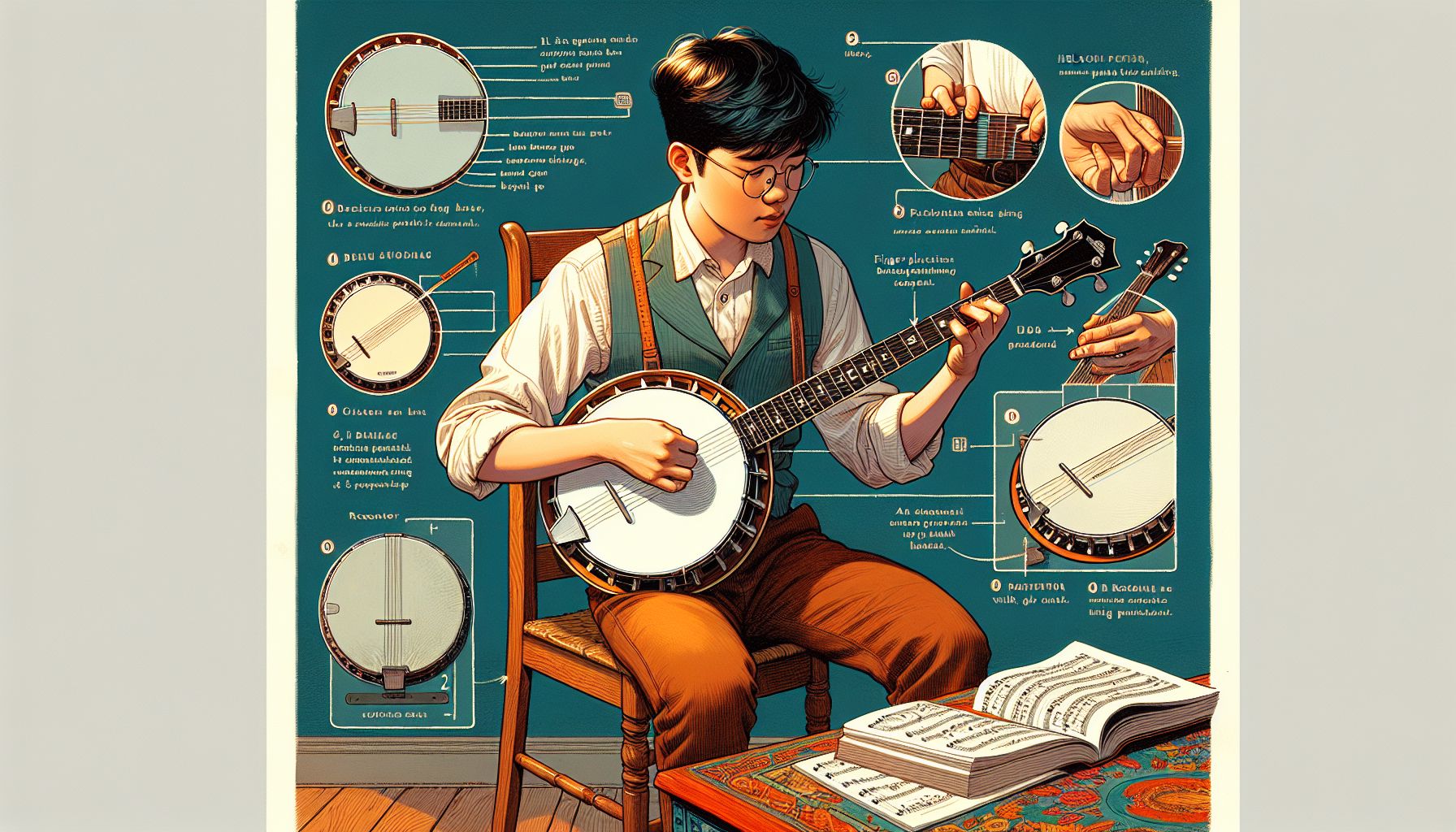When it comes to playing a musical instrument, one can find a wide range of options. However, if you’re looking for a unique sound and a fun experience, learning to play the banjo might just be the perfect choice for you. The banjo, especially the 5-string banjo, is often associated with folk, bluegrass, and country music, and has a distinct twang that can instantly set the mood for a lively tune. In this beginner’s guide, we will explore the wonderful world of the banjo, its history, different types, how to get started, and some useful tips to keep in mind along the way.
Introduction to the Banjo
The banjo, with its signature sound, dates back to the 19th century and has its roots in African instruments. Over time, it evolved and became an integral part of American traditional music. The most common type of banjo is the 5-string banjo, which consists of a circular body, a long neck, and usually has four strings that you play with your fingers or using a pick. One string, called the drone string, runs parallel to the other four and is mostly used for rhythmic purposes. The banjo can be played in various styles, such as clawhammer, frailing, or three-finger picking.
Getting Started
Choosing the Right Banjo
Before diving into learning to play the banjo, it’s important to choose the right instrument. If you’re a beginner, opting for a relatively inexpensive and good quality banjo is a wise decision. A 5-string banjo with a resonator is a good option for beginners, as it provides a full and powerful sound. Acoustic banjos are more common, but there are also electric banjos available for those interested in amplifying their sound. Whichever you choose, make sure it feels comfortable in your hands and has good playability.
Tuning the Banjo
Now that you have your banjo, it’s time to get it in tune. The most common tuning for the 5-string banjo is called G tuning, where the strings are tuned to G, D, G, B, D from the lowest to highest pitch. You can use an electronic tuner or a smartphone app to help you achieve the correct pitch.
Basic Techniques
Once your banjo is in tune, it’s time to start playing! Let’s cover some basic techniques that every banjo beginner should learn:
1. Right Hand Technique: When playing the banjo, your right hand plucks or picks the strings. There are different ways to play the banjo, but the three-finger picking technique is widely used. This technique involves using the thumb, index, and middle fingers to pluck the strings. Experiment with different hand positions and find what feels most comfortable for you.
2. Left Hand Technique: Your left hand will be responsible for pressing down the strings on the neck of the banjo to produce different notes. You can use your index, middle, and ring fingers to press the strings. Remember to press down just behind the frets to get a clean sound.
3. Strumming Patterns: Once you have a basic grasp of plucking the strings, you can experiment with different strumming patterns. Start with simple downstrokes and gradually incorporate upstrokes for a more dynamic sound.
Learning Resources
Learning to play the banjo is an exciting journey, and fortunately, there are many resources available to help you along the way. Online tutorials, instructional videos, and even banjo lesson books can supplement your learning process. Additionally, joining a community of banjo players, either in person or online, can provide advice, support, and a sense of belonging on your musical journey.
Tips for Banjo Beginners
To make your banjo learning experience even more enjoyable and fruitful, here are some handy tips:
-
Practice Regularly: Consistency is key. Aim to practice for short durations each day rather than cramming in long practice sessions sporadically. This will help build muscle memory and improve your overall skills.
-
Start Slow: Learning any instrument takes time and patience. Begin with simple tunes and gradually increase the complexity as you progress. Don’t rush the learning process.
-
Record Yourself: Recording your practice sessions can be a powerful tool. It allows you to objectively evaluate your playing and track your progress over time.
-
Listen to Banjo Music: Immerse yourself in the world of banjo music. Listen to various banjo players and different banjo styles to develop an ear for the unique sounds of the instrument.
-
Have Fun: Above all, enjoy the banjo journey! Let your love for the music and the instrument be your driving force, and remember that practice and progress are more important than perfection.
Conclusion
Learning to play the banjo, especially the 5-string banjo, is a rewarding and fulfilling endeavor. As a beginner, choosing the right instrument, understanding basic techniques, and accessing helpful resources are vital steps towards becoming a skilled banjo player. Remember to practice regularly, be patient with yourself, and have fun throughout the learning process. So grab your banjo, strum a few chords, and let the twang of the banjo take you on a musical adventure!


